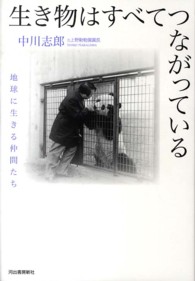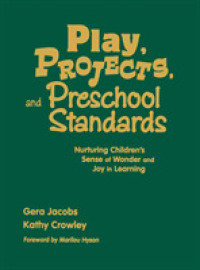- ホーム
- > 洋書
- > 英文書
- > Science / Mathematics
Full Description
The concept behind this book is to take a holistic view of food texture, starting with the determination of food texture, its perception in the mouth, and its measurement by both sensory and instrumental methods, and to examine the relation between them.







